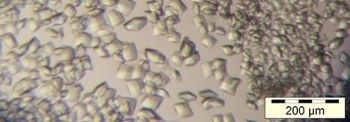Mar 3 2016
Vehicle fuels obtained from plant wastes are generally climate friendly and sustainable. However obtaining energy stored in stems, twigs, and bark is a challenging process as it is locked up in the cellulose.

Enzymes used for cellulose conversion into sugar often find it difficult to break down the cellulose. However lytic polysaccharide monooxygenases (LPMOs) are an enzyme family that facilities cellulose transformation into sugar, which is then converted into alcohol through subsequent fermentation process. A group of chemists from the University of Copenhagen have demonstrated the binding process of LPMOs with cellulose, providing a key insight into the working mechanism of these enzymes. This knowledge is very important for the development and production of biofuels in a sustainable manner.
International team behind investigation
The research team includes Kristian Frandsen, a PhD student at the Department of Chemistry of the University of Copenhagen, Associate Professor Leila Lo Leggio and Laboratory Manager Jens-Christian Navarro Poulsen who is part of CESBIC, an international research consortium consisting of Novozymes, a Danish company, and others. The research team has published its article, 'The molecular basis of polysaccharide cleavage by lytic polysaccharide monooxygenases' in the Nature Chemical Biology journal.
Assistant enzyme in decomposition
Plant wastes are composed of cellulose, which is an energy rich polymer consisting of glucose units (sugar) linked together in chains. The next step is to ferment glucose into alcohol to be used as fuel. The first author Kristian Frandsen explained that the use of LPMO helps other enzymes to crack open the cellulose easily. Increased knowledge about the process mechanism is cruical.
We are the first ones to get a picture of an LPMO in the first stage of the breakdown process, and in high resolution no less. Combined with our colleagues’ biochemical and spectroscopic insights, the entire team of researchers has been able to attain a detailed appreciation of the chemical mechanisms. That is, how the enzyme is able to hack away at cellulose at the sub-atomic level. Additionally, the project has provided me with contact to many international experts.
Kristian Frandsen, PhD Student, Department of Chemistry, University of Copenhagen
Breakthrough to see details on atomic level
Associate Professor Leila Lo Leggio, who is Frandsen’s PhD supervisor, considers this research a step forward. Although the first LPMOs were discovered during the 1990s, they were initially believed to be glycoside hydrolases, an enzyme that uses water molecules to break bonds. Further research revealed the use of oxygen by these enzymes, and the role of a copper ion in the oxidation process.
We had known what the enzymes looked like on their own for quite some time. This knowledge was important as form controls function. But many in the LPMO field consider the understanding of how LPMOs bind to cellulose as some sort of “Holy Grail”. Without that knowledge, it is impossible to understand the details of what controls the reaction. With X-ray crystallography, we have now been able to take a few snapshots in crystals of LPMOs that were soaked with bits of cellulose, allowing us to witness detail at the atomic level.
Leila Lo Leggio, Associate Professor, University of Copenhagen
Tricky to stick enzyme to cellulose
X-ray crystallography was used by the UPCH researchers to explain the interaction of LPMOs with cellulose. To enable X-ray crystallography, it was necessary to bind cellulose fragments into crystals of the enzyme.
Our group had already conducted unsuccessful attempts with other LPMOs to create a crystal in which the substrate, cellulose, was bound. And we know that many other groups have conducted similar experiments. Therefore, it was a great moment when we received the good news from Kristian that cellulose fragments were apparent in the structure.
Jens-Christian Navarro Poulson, Laboratory Manager, CESBIC
International X-ray
The MAXlab in Lund, Sweden, and the ESRF facility in Grenoble, France, were used to conduct the X-ray experiments. Novozymes determined and created the enzyme for the experiments. Apart from Novozymes and UCPH’s Department of Chemistry, the University of Cambridge, Aix-Marseille Université and the University of York are the other members of the international consortium.